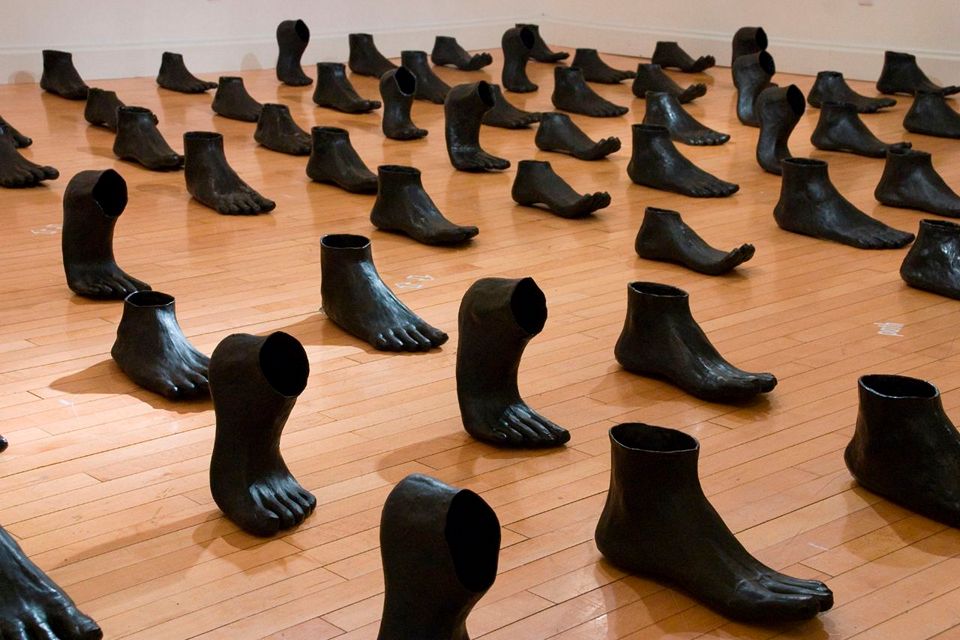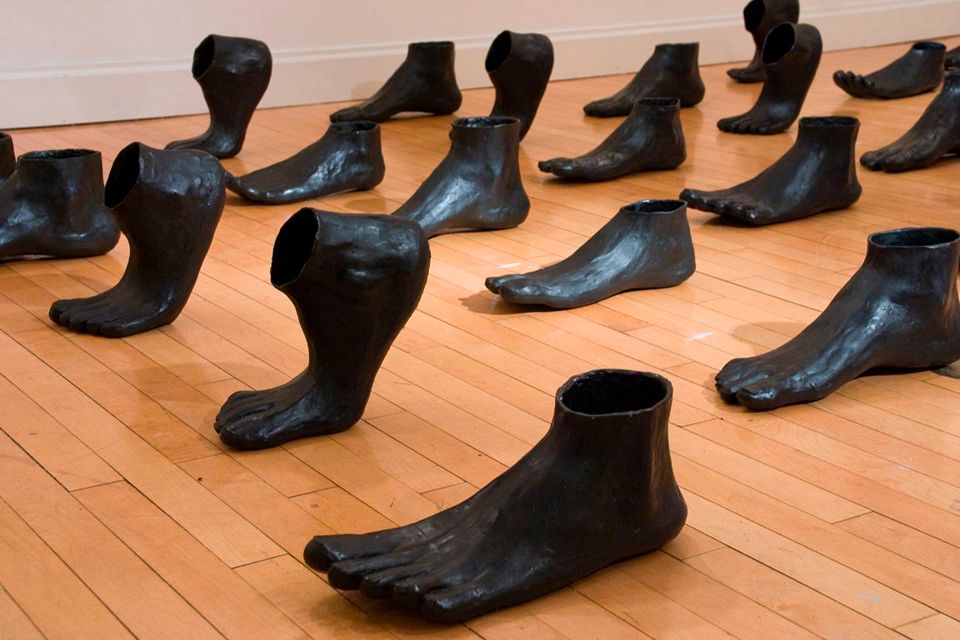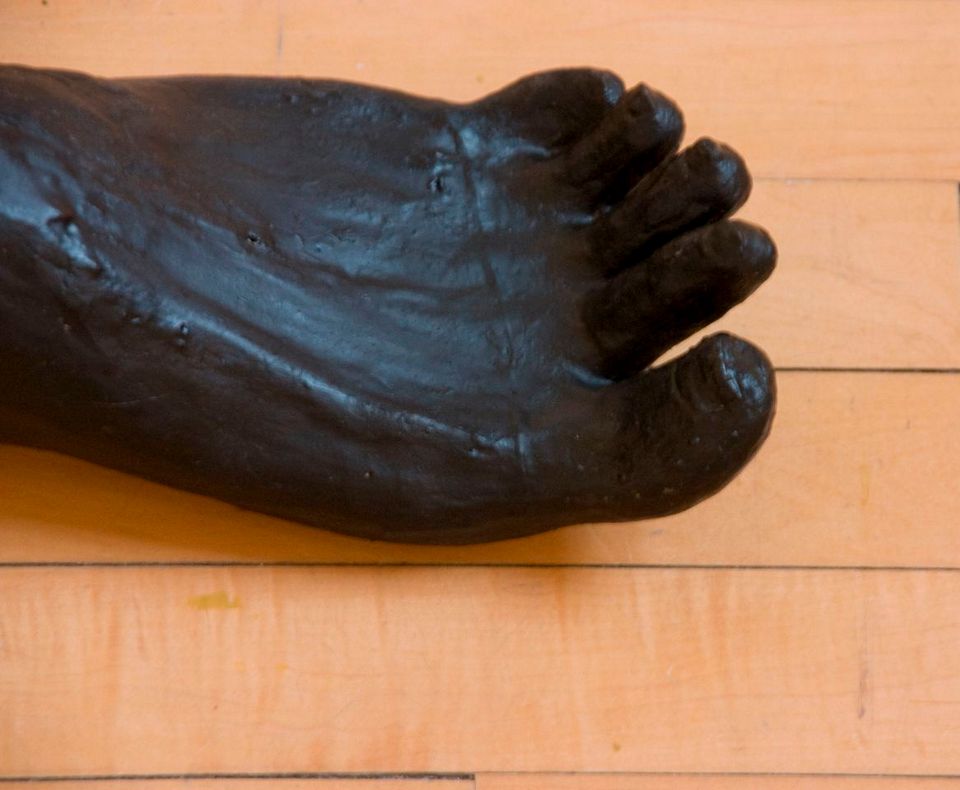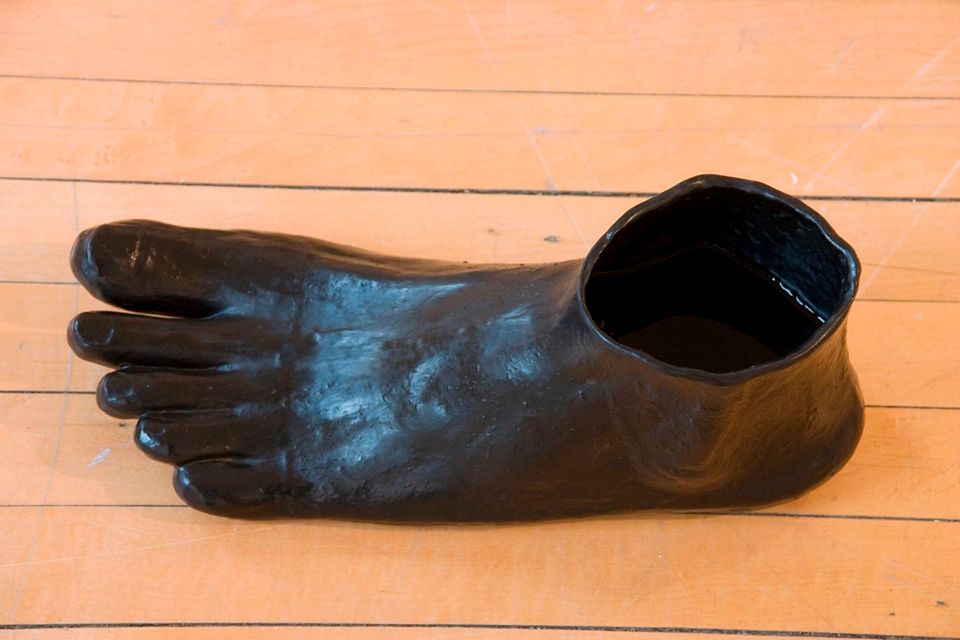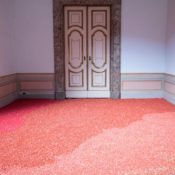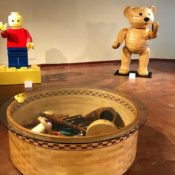This installation is an anti-memorial for the Partition of India in 1947– a very traumatic event that displaced almost 20 million people. The ethnic violence that ensued in the wake of the partition, resulted in around 2 million deaths and 300,000 women being abducted and raped.
It showcases the counter-memory of the Partition that is elided from the popular memory culture that prevents the acknowledgment of the sexual violence and the silenced stories of defiled women jumping into the village well to commit suicide and save the family honor.
The Silent Waters anti-memorial seeks to memorialize the fatigued, brutalized, and defiled bodies of the refugees and migrants of partitions of 1947 and 1971. Silent Waters deploys twice-life-sized, feet to function as an anti-memorial to reveal the counter-memories buried in the collective narratives of trauma, in the partitions of 1947 and 1971.
There are three component parts to the Silent Waters anti-memorial:
1. 101 FEET
This site-specific installation is comprised of 101 larger-than-life-scale ceramic feet. The feet are hollow and glazed jet black inside and out. Feet are a particularly androgynous fragment of the human body and here they depict the mass displacement of people in 1947 and 1971 and also acknowledge both the male and female body as sites of sexual violence.
Why 101 feet?
In India, it is considered auspicious to make offerings of money in the amounts of 11, 21, 51, 101, 501 and so on in temples. Therefore, 101 feet is a symbolic number to make a memorial offering to the men and women who were brutalized in the Partition riots.
2. WATER AND SALT
Water has a ritualistic and ceremonial role in the funerary rites of Hindu, Muslim, and Sikh communities. The empty ceramic feet filled with saltwater function as a surrogate for the absent, defiled bodies.
The feet are filled with saltwater, and as the water evaporates it creates a residue of crystallized salt inside the feet. The presence of water in this anti-memorial is poetic – by taking the shape of the feet, and filling the space in the hollow feet, it transforms the feet into containers of memory.
3. SOUNDSCAPE
A minimalist soundscape accompanies this installation and comprises of the sounds of rain, running feet, and a body falling into the water, presumably a well. This soundscape plays in a loop in the space of the installation.
Title
The title of this anti-memorial makes an intertextual reference to the movie, Khamosh Paani (Silent Waters) (Sumar 2003). Hushed stories of defiled women jumping into the village well to commit suicide and save the family honor have become a cultural trope in the collective memory of the Partition. A poignant movie, “Khamosh Paani (Silent Waters),” deploys this trope in a nuanced and sensitive manner.
The Artist
Pritika Chowdhry is a socio-political, activist artist. She makes art about traumatic geopolitical events, from a counter-memory perspective. Her large-scale sculptures and site-sensitive installations reference the body to memorialize unbearable and difficult memories.
She seeks to connect seemingly disparate geopolitical contexts and believes that it is important to bring bridges into being. Counter-memories of communities and nations provide the viscera with which she builds these bridges in her work.
You can find more more artworks by Pritika Chowdhry on her website |Instagram | Tumblr.


